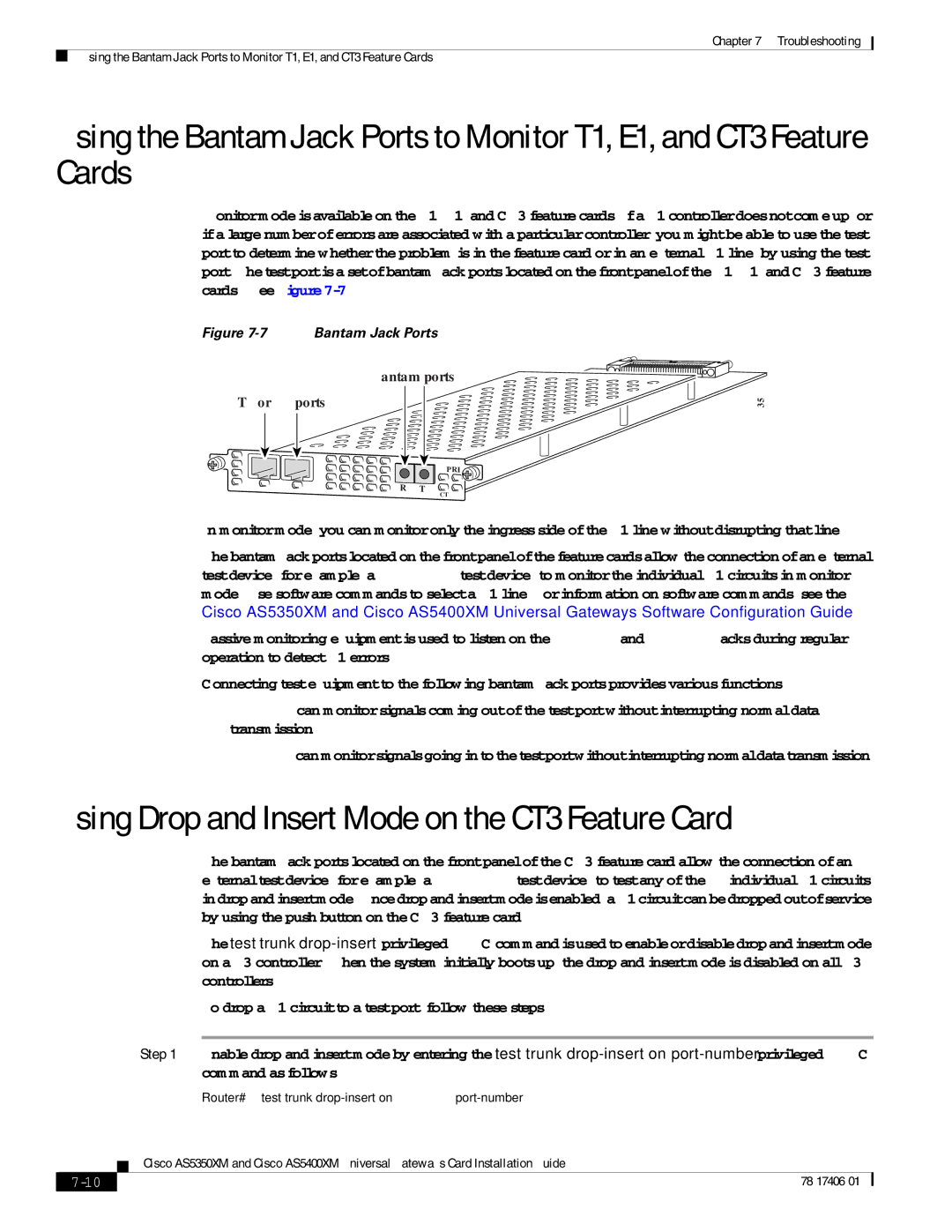
Chapter 7 Troubleshooting
Using the Bantam Jack Ports to Monitor T1, E1, and CT3 Feature Cards
Using the Bantam Jack Ports to Monitor T1, E1, and CT3 Feature Cards
Monitor mode is available on the T1, E1, and CT3 feature cards. If a T1 controller does not come up, or if a large number of errors are associated with a particular controller, you might be able to use the test port to determine whether the problem is in the feature card or in an external T1 line. by using the test port. The test port is a set of bantam jack ports located on the front panel of the T1, E1, and CT3 feature cards. (See Figure
Figure 7-7 Bantam Jack Ports
Bantam ports
T1 or E1 ports
35840
0 | 1 |
Rx Tx
2 PRI![]()
ACT OK
In monitor mode, you can monitor only the ingress side of the T1 line without disrupting that line.
The bantam jack ports located on the front panel of the feature cards allow the connection of an external test device (for example, a FIREBERD test device) to monitor the individual T1 circuits in monitor mode. Use software commands to select a T1 line. For information on software commands, see the Cisco AS5350XM and Cisco AS5400XM Universal Gateways Software Configuration Guide.
Passive monitoring equipment is used to listen on the TX MON and RX MON jacks during regular operation to detect T1 errors.
Connecting test equipment to the following bantam jack ports provides various functions:
•TX MON can monitor signals coming out of the test port without interrupting normal data transmission.
•RX MON can monitor signals going in to the test port without interrupting normal data transmission.
Using Drop and Insert Mode on the CT3 Feature Card
|
|
|
| The bantam jack ports located on the front panel of the CT3 feature card allow the connection of an | |
|
|
|
| external test device (for example, a FIREBERD test device) to test any of the 28 individual T1 circuits | |
|
|
|
| in drop and insert mode. Once drop and insert mode is enabled, a T1 circuit can be dropped out of service | |
|
|
|
| by using the push button on the CT3 feature card. | |
|
|
|
| The test trunk | |
|
|
|
| on a T3 controller. When the system initially boots up, the drop and insert mode is disabled on all T3 | |
|
|
|
| controllers. | |
|
|
|
| To drop a T1 circuit to a test port, follow these steps: | |
|
|
|
|
| |
|
|
| Step 1 | Enable drop and insert mode by entering the test trunk | |
|
|
|
| command as follows: | |
|
|
|
| Router# test trunk | |
|
|
| Cisco AS5350XM and Cisco AS5400XM Universal Gateways Card Installation Guide | ||
|
|
| |||
|
|
|
|
|
|
|
|
|
|
| |
|
|
|
| ||
